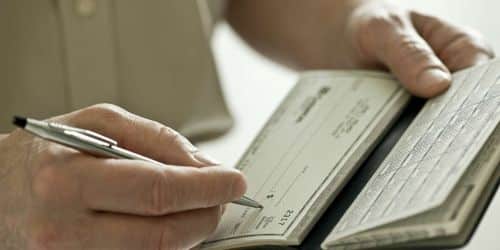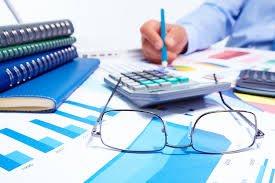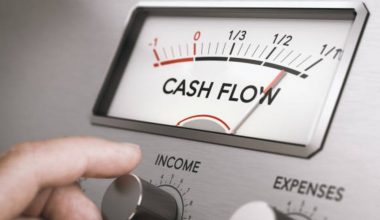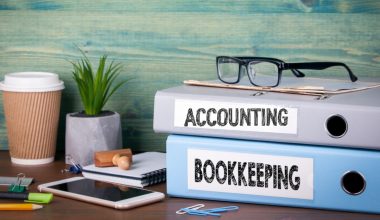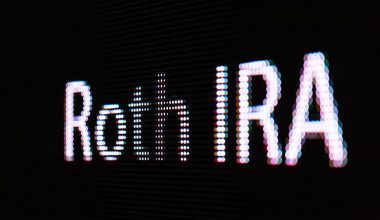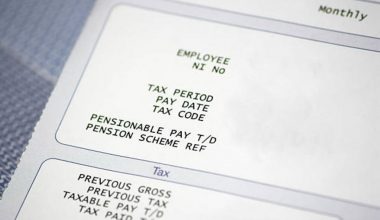Do you know that with a checking account number, you can deposit your funds and then draw them to make purchases? They are used in the short term to cover your expenses. A checking account is one of the best methods to save funds. It also involves everyday banking functions. Here, we’ll see how a checking account works, its benefits, and how it differs from a current account.
What is a Checking Account?
A checking account is a multipurpose deposit account that is used for everyday banking functions. Checking accounts allow you to deposit funds and then draw on them to pay bills or make purchases. They are also known as transactional accounts.
It is a deposit account at a financial institution where money is kept for daily use. Checking accounts differ from other types of financial accounts in that account holders can withdraw and spend money from them
Checking accounts are distinct from savings accounts in that they are intended for daily use. money in your checking account is money that you intend to use in the short term to cover your expenses.
A checking account allows you to easily access your money for daily transactions while also keeping your cash safe. Customers can often make purchases or pay bills using a debit card or checks. Accounts may have many methods for avoiding the monthly service price.
How Does A Checking Account Work?
A person can open a checking account with a bank or another financial organization, such as a credit union. These accounts often do not pay interest. It is vital to know that these accounts impose fees for non-compliance with minimum balance requirements. While the financial institution does not access the customers’ credit scores, they may assess the client’s credibility. Checking accounts allow for overdrafts.
A checking account operates by allowing you to deposit and spend money through;
- Direct deposit
- Check deposit through mobile device
- ATM withdrawals
- Deposits made through a teller ACH deposits
- Wire transfers that arrive
Direct deposit allows you to have money immediately deposited into your account by providing your bank account details. For example, you may have your paychecks transferred directly into your account, eliminating the need for a physical check.
Take a photo of a paper check and deposit it into your bank account using a mobile check deposit. This service is convenient because it eliminates the need to visit a branch or ATM to deposit checks. To deposit cash into your checking account, you would still need to visit a branch or an ATM
What is a Checking Account Number?
Your checking account number is the number that your bank recognizes as your specific account at the bank you use.
Banks identify where funds meant for you should be placed or withdrawn using the checking account number. The simplest way to find the checking account number is on a personal check. A checking account number is a unique identifier for each account you have with a bank or other financial organization.
Together with the routing number, the checking account number is used by the bank to make payments and accept deposits.
Benefits of A Checking Account
The benefits of a checking account include:
#1. Payment processing
A checking account makes it simple to accept payments from customers, vendors, and staff, using the checking account number whether they are made by cheque, internet transfer, or debit card.
#2. Keeping records
A checking account enables businesses to maintain track of their financial transactions, which is necessary for accounting and tax purposes. This is done using the checking account number
#3. Credit:
Having a solid checking account and a secured checking account number can help firms qualify for loans and other forms of credit from financial institutions.
#4. Security
Separating business funds from personal monies in a separate checking account can help safeguard against fraud and other financial hazards, as well as providing a clear division between personal and business resource
#5. Automation, early paychecks, and savings deposits
A checking account gives you the option of setting up direct deposit. Without lifting a finger, have your wages transferred immediately into your checking account through your checking account number . That’s free money in your pocket! To make financial planning easier, open a savings deposit account.
#6. Financial Planning and Money Management
Financial planning for the future can be difficult. Tracking your spending allows you to plan more effectively. Remove the stress from your life by properly managing your money.
#7. Create Credit
Open a checking account and pay your payments on time to build your credit using the checking account number. With digital and mobile banking, paying bills has never been easier. Having good credit opens up a world of opportunities, such as better loans, lower interest rates, and more.
#8. Maintaining Accurate Financial Records
The days of keeping track of your spending by hand are long gone. View each transaction using you financial records.
Checking Account vs Savings Account
The primary distinction between checking and savings accounts is checking accounts are used to access money for everyday consumption. while savings accounts are used to save money. Checking accounts are “transactional,” which means you can access your money when and when you need it. While both allow you to access your money, checking accounts may be more convenient.
Because these accounts are intended to provide you with simple access to your money, they frequently include debit cards, checks. In contrast, the number of withdrawals you can make from a savings account each month is limited. While checking accounts are helpful for daily cash needs, be in mind that they may have an age restriction. Most banks won’t allow anyone under age of 18 to open a checking account unless they have a legal guardian
When it comes to putting money aside for a long-term necessity or goal, a savings account should be considered. Savings accounts are intended to keep money for a lengthy period of time in order to help you save for longer-term goals (rather than daily expenditures).
If you keep your money in the saving account, it will earn interest and expand over time. To access your money in a typical savings account, you must visit your bank, set up a transfer online using the account number, or make an ATM withdrawal. You can write checks from a money market savings account. Saving money in a savings account is a fantastic way to stash it aside for emergencies or significant expenditures; the limited access will deter you from spending it on day-to-day necessities. There are also dedicated savings accounts for children, guardian must be a joint owner.
Checking Account vs Current Account
In many aspects, a current account is almost identical to a checking account in that it allows you to manage your finances.
This current account accepts deposits using the account number and allows you to withdraw funds in a variety of ways. A debit card is supplied to the bank’s client, which can be used to withdraw cash from an ATM (Automatic Teller Machine) and pay for goods and services when shopping.
You can also shop online using your debit card information, digital payment wallets (such as Google Pay), or direct funds transfer via internet banking.
While a checking account is one that accepts money deposits but also allows withdrawals.
The traditional method of making a withdrawal was to write a cheque, which is basically a document that instructs the bank on how and, more crucially, to whom the money is to be taken. People used to pay their bills in this manner since they could mail the check along with the bill. When buying or paying for products and services, you might also write a check.
Because they both relate to the same type of bank account, the terms checking account and current account can be used interchangeably.
In the United Kingdom, “Current Account” is more generally used, while “Checking Account” is more commonly used in the United States.
Both types of accounts often provide similar functions, such as the ability to deposit using the account number and withdraw funds, make checks or use a debit card for transactions, and maybe earn interest or suffer fees depending on specific conditions.
What is a Checking Account Used For?
A checking account is used as deposit account that allows you to make withdrawals, deposits, and fund transfers with ease.
Is a Debit Card a Checking Account?
No they are not. Checking accounts and debit cards are theoretically two independent goods, however they are typically incompatible. While they both let you to manage your money and perform transactions, they differ in a few ways.
Why do People Get a Checking Account?
There are several compelling reasons why people have checking account:
- A checking account can help you manage and protect your money.
- You don’t to need to carry huge sums of cash with you.
- If you have a state ID or driver’s license, most companies will accept checks.
- You can typically obtain a debit card, which can be used similarly to a credit card for online purchases or payments, paying for gas at the pump, and so on.
- Canceled checks demonstrate that you paid a bill.
- Your bank account money is safe from fire, destruction, or theft.
- The federal government (FDIC) insures checking accounts at most banks up to certain dollar limits.
What Is A Disadvantage Of A Checking Account?
Many checking accounts have extra fees such maintenance charges, ATM withdrawal charges, and transaction charges.
Why are Checking Accounts Better?
#1. It’s a method of keeping your money safe
Keeping huge sums of cash at home is a risk. Even if you have a safe place to keep it, significant cash reserves in the home attract thieves and can be lost by fires, floods, or other natural catastrophes. When you keep your money in a bank or credit union, it is not only safe, but it is also insured.
#2. There is documentation:
Another risk of paying bills or other obligations with cash is that the payment will not be tracked or handled properly. all transactions are recorded in statements and transaction ledgers. Every payment you ever make has a paper trail to verify it.
#3. There are no transaction restrictions
Having both checking and savings accounts is beneficial, especially if you are seeking to create wealth or save money for specific financial goals. One of the primary reasons is because checking accounts have no transaction limits. With a checking account, you don’t have any restrictions on withdrawals, debit card payments, checks, or money transfers, offering you more financial freedom overall.
#4. They make it simple to manage your finances:
Aside from online bill pay, another advantage of a checking account’s online banking capabilities is simple money management. Rather than needing to count currency or consider how much money you have in numerous hiding locations, you may get a unified perspective of your financial status by just entering a password.
#5. They have more functions than digital wallets:
People can transmit money to each other online using services like PayPal. However, a checking account still has much more functions than any digital wallet app, including direct deposit and bill pay.
Why do people not want to have a checking account?
A fifth of people who have recently gone bankrupt and those that don’t have a checking account did so because they lost their job or a large amount of their income. Meanwhile, the most often claimed reason for not having a bank account among all unbanked households is a lack of funds to meet minimum balance requirements.
If you earn your money through cash, bitcoin, prepaid cellphone credits (like M-Pesa), or community currencies, having a bank account may be unnecessary. The same is true if you have a prepaid or credit card account into which you can deposit your paycheck. A bank account may also be unneeded in civilizations where bartering is still frequently practiced. This is especially true when account fees are charged by banks. Some people do not have checking accounts because they oppose the financial system ideologically.
Do Checking Accounts Hurt Your Credit?
No, your credit report solely includes information about your credit and financial situation. The following transactions will not appear on your credit report or credit score if you have a checking or savings account at a bank, credit union, or brokerage firm:
- Depositing or withdrawing funds
- Making a check
- Account closure
- Having several accounts
If you have a check overdraft, it will not display on your report unless you pay the costs and the bank transfers the bill to a collection agency.
In conclusion,
A checking account is one of the best form of account. you can operate you checking account any day any time. It is also known as transactional account because of its daily transaction function.
